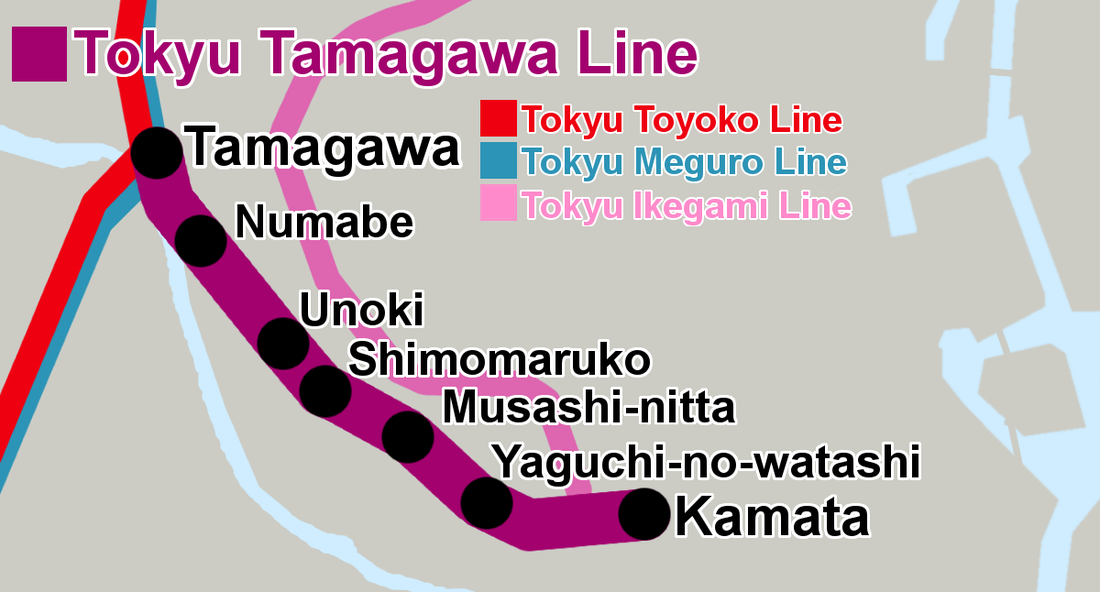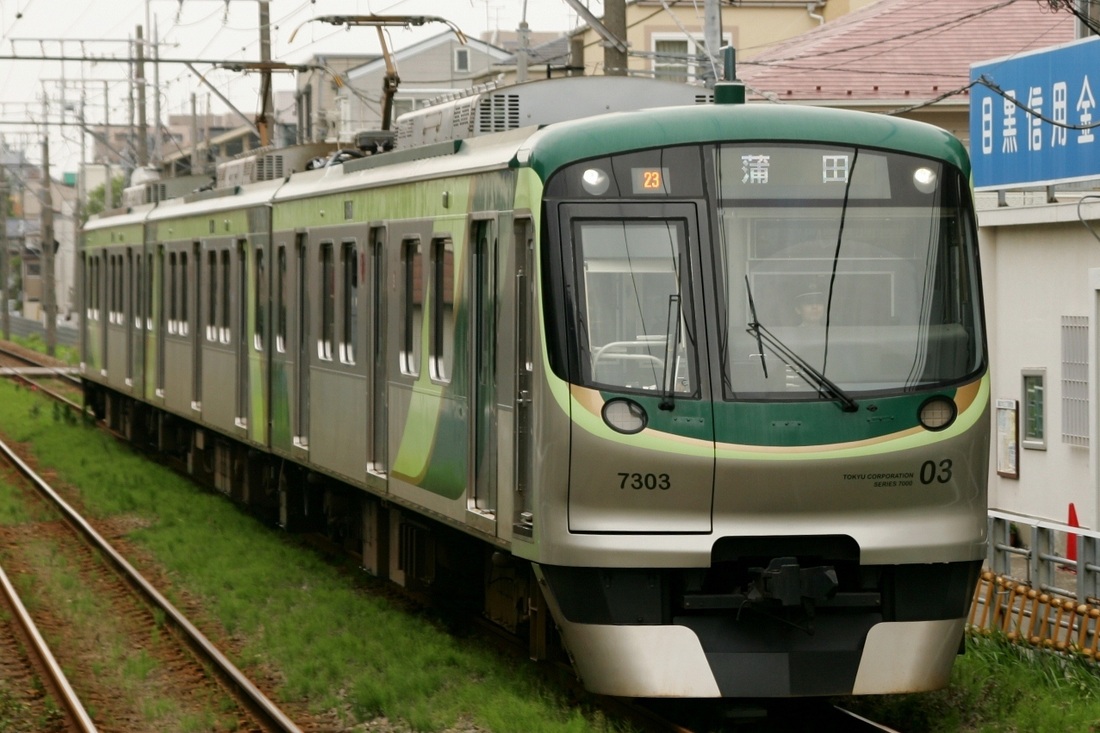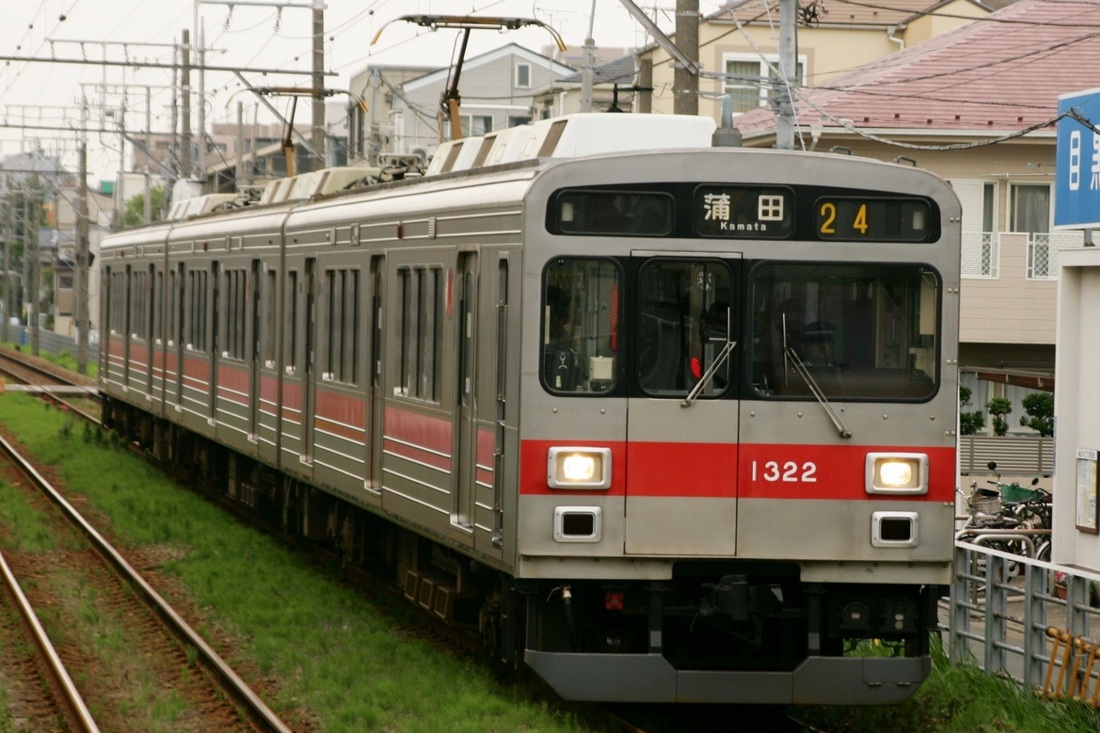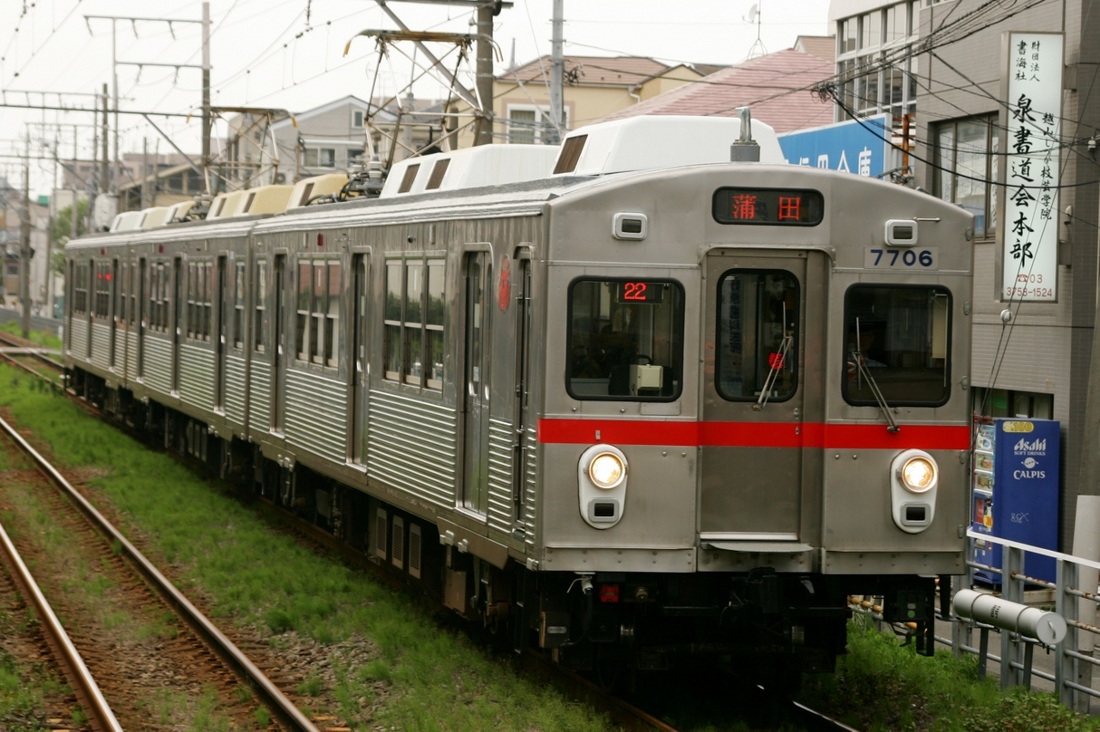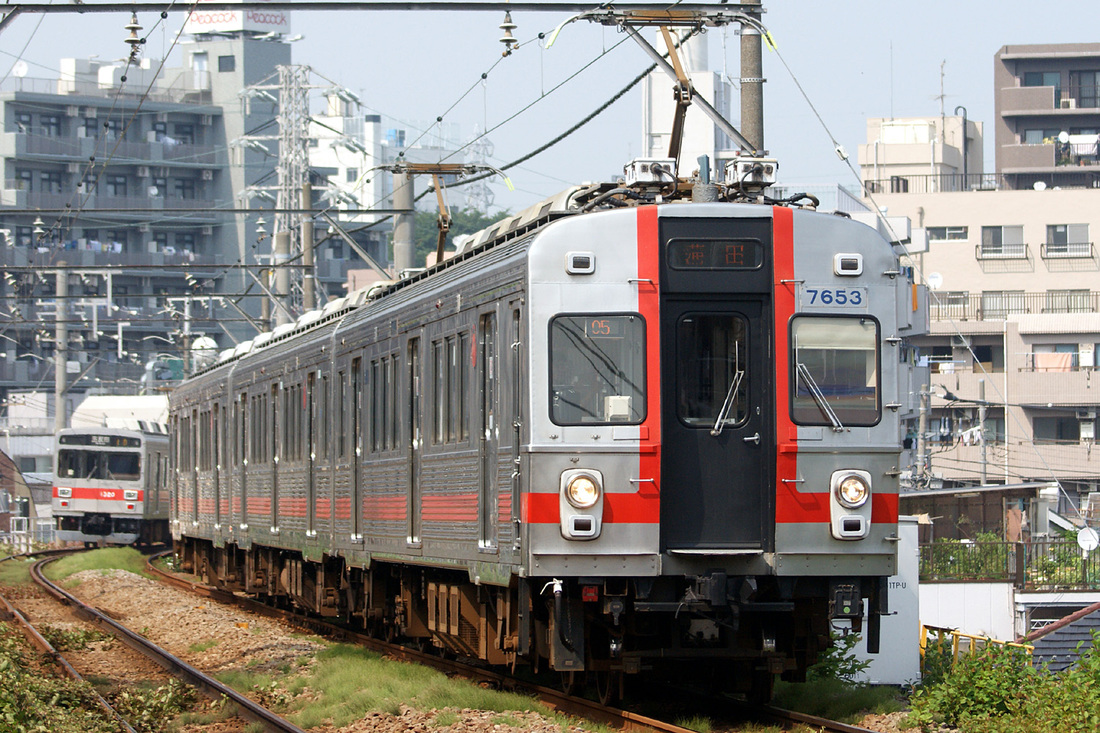|
Length: 5.6km
Stations: 7 Gauge: 1067mm (Narrow) Electric system: 1500v DC Trains on the
Tokyu Tamagawa Line New 7000 Series 2007 - Present
1000 Series 1988 - Present
7700 Series 1987 - Present
7600 Series 1986 - Present
|
Tokyu Tamagawa LineTamagawa - Numabe - Unoki - Shimomaruko -
Musashi-nitta - Yaguchi-no-watashi - Kamata The Tokyu Tamagawa Line is a short-distance train line owned and operated by the Tokyu Corporation. It connects Tamagawa Station with Kamata Station, both in Ōta Ward. The Tokyu Tamagawa Line is not directly connected with any other line, Tokyu or
not. The Tokyu Tamagawa Line first appeared on the maps in 2000, but the tracks themselves had been their since the establishment of the Tokyu Corporation in the 1920s. It was part of the Mekama Line which connected Meguro Station, which oddly enough is not in Meguro Ward, with Kamata Station. The Tamagawa through Kamata portion of the Mekama Line was split and became what is now known as the Tokyu Tamagawa Line. It was named the "Tokyu Tamagawa Line" to avoid confusion with the Seibu Tamagawa Line. The rest of the Mekama Line was renamed the Meguro Line and was extended first to Musashi-kosugi, then to Hiyoshi Station. All trains are operated as three car formations with a good portion of the rolling stock being from the Mekama Line era. Trains such as the New 7000 Series have been introduced, but the older rolling stock still remains as the majority. All trains other than the New 7000 Series are not equipped with ATC (Automatic Train Control) Equipment and must be sandwiched between two motor cars when they are taken for inspections to Nagatsuta on the Denentoshi Line. Major Stations Tamagawa Station This is the terminal station for the Tokyu Tamagawa Line heading west. As the name suggests, it is located near the bank of the Tamagawa river which separates Tokyo and Kanagawa Prefecture. You can change to the Tokyu Toyoko and Meguro Lines at this station. Expresses on both the Toyoko and Meguro lines stop here but Limited Expresses on the Toyoko Line do not stop. Kamata Station This is the east-bound terminal station on the Tokyu Tamaga Line and also the Ikegami Line. It is also the single most crowded station on the line with over 40000 people using it daily. Tokyu Kamata Station is connected with JR East's Kamata Station and you can change to the JR Keihin-Tohoku Line. However, they are both operated separately and must be accessed by their own separate ticket gates. The Keikyu Corporation also owns a station named Keikyu Kamata, but it is not connected with either Tokyu or JR Kamata and is in an entirely separate location. |

